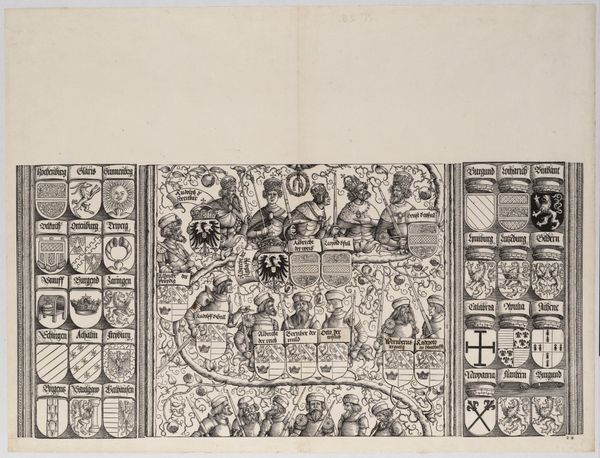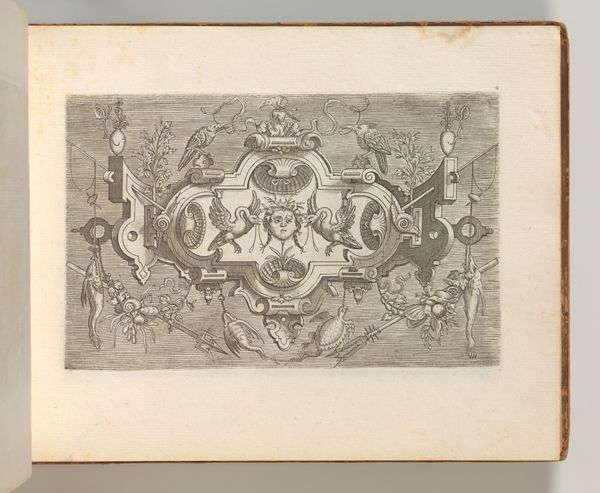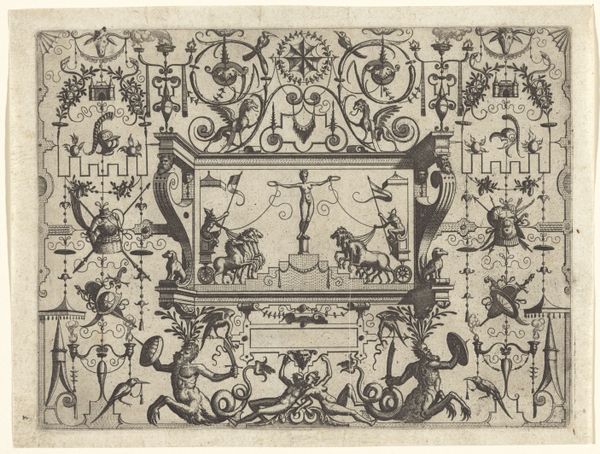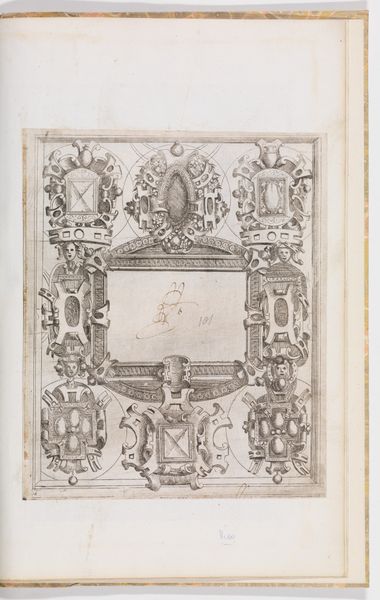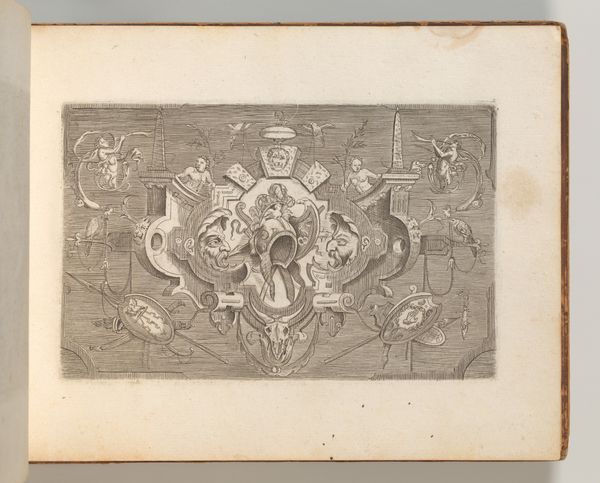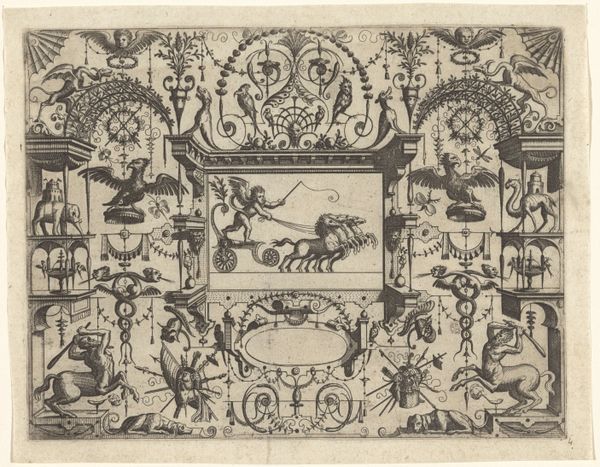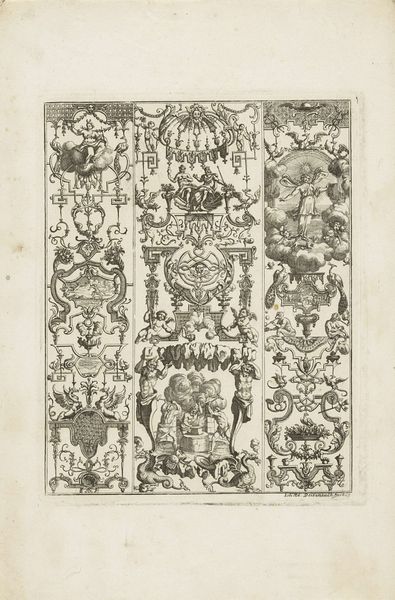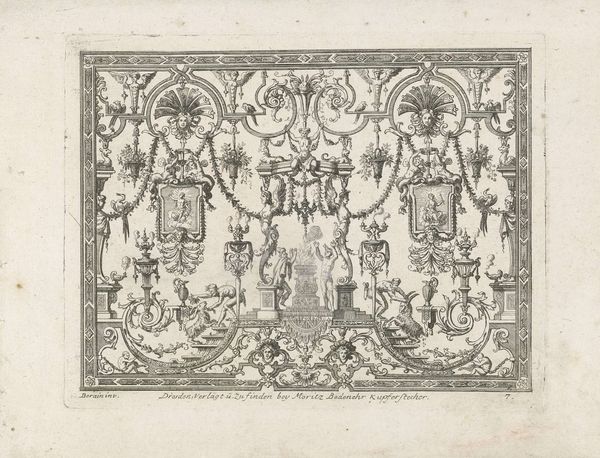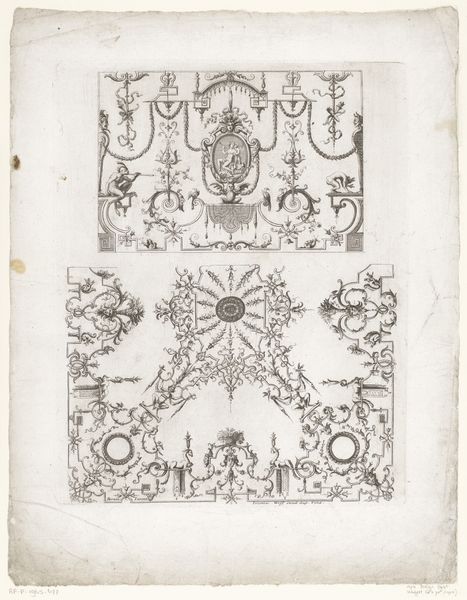
The Emperor Seated on His Throne, Seated Between Joanna of Castile and Mary of Burgundy, Above Are Twenty-two Winged Victories; with Coats of Arms of Maximilian's Noble Relatives, from the Arch of Honor, proof, dated 1515, printed 1517-18 1515
0:00
0:00
drawing, print, woodcut
#
drawing
#
high-renaissance
#
allegory
# print
#
woodcut
#
history-painting
Dimensions: Sheet: 17 15/16 in. × 24 in. (45.6 × 60.9 cm)
Copyright: Public Domain
Curator: Here we have Hans Springinklee's "The Emperor Seated on His Throne," created around 1515 as part of a larger project. It’s a woodcut and drawing that portrays Emperor Maximilian I. The print we're viewing resides at the Metropolitan Museum. Editor: Wow. That’s… intense. The sheer detail of the woodcut is blowing my mind a bit. All those little figures! There is so much happening! But there's something slightly claustrophobic about it all; it is a bit too maximalist, isn't it? Curator: Well, think of it as visual propaganda. This was initially part of a much larger work, "The Triumphal Arch," commissioned by Maximilian to ensure his legacy and legitimize his reign. Consider this image nested in that context. Editor: That does change my perspective, seeing it as a calculated declaration. So much symbolism packed into every corner… Makes me wonder about the intended audience and their ability to decipher all those coats of arms! The emperor, though central, feels a bit overwhelmed by it all, don't you think? Curator: That sense of overwhelmingness may also speak to the very real pressures of maintaining power. The women seated with Maximilian are, arguably, key figures here. Joanna of Castile and Mary of Burgundy representing heritage, territory, dynastic marriages... It's a strategic positioning that seeks to encompass vast familial and territorial claims. Editor: And then there are the winged victories above! It’s like a tapestry woven with political threads. Does the composition mirror some sort of established visual language for displays of power in the Renaissance? Curator: Absolutely. It pulls heavily from Roman triumphal arches, appropriating classical imagery to bolster the Emperor’s image. By situating Maximilian within this historical lineage, it attempts to create an unbroken chain of imperial authority. Moreover, if we consider it from a modern perspective, we can analyse how this carefully cultivated persona contributes to the making of historical narratives and the perpetuation of power dynamics. Editor: Fascinating. You know, after this conversation, that slight claustrophobia I felt has transformed into awe. A meticulously crafted… assertion. Curator: Indeed. These prints served as critical instruments in solidifying Maximilian's power through calculated representation, designed for dissemination, control, and the very act of historical storytelling itself. Editor: Okay, yeah. "Historical storytelling." I'll remember that.
Comments
No comments
Be the first to comment and join the conversation on the ultimate creative platform.
